Lamington Viaduct probe uncovers lapsed safety system
- Published
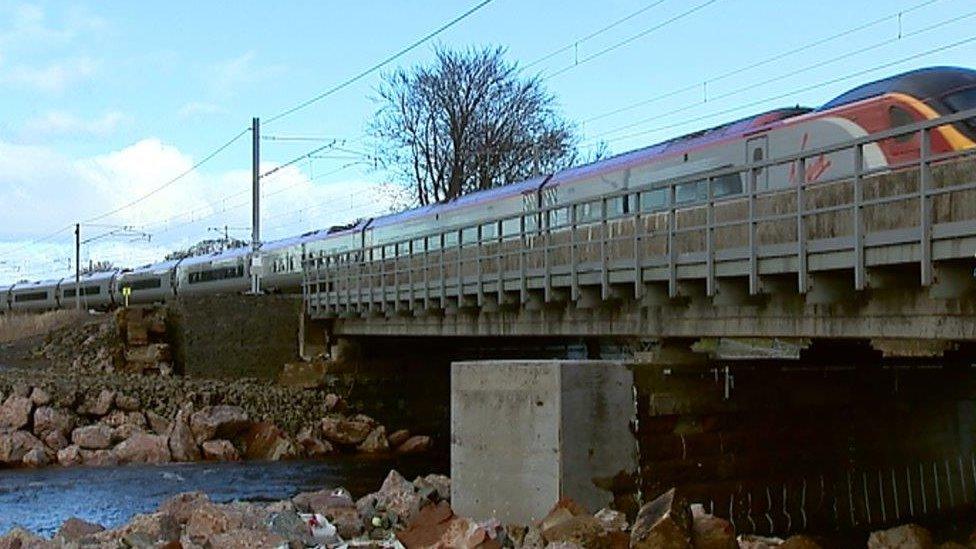
The Lamington Viaduct carries the West Coast Main Line over the River Clyde
An investigation into why trains were allowed over a badly damaged bridge has found that a safety system for at-risk structures was no longer in use.
The Rail Accident Investigation Branch looked at why the Lamington Viaduct in South Lanarkshire was used when it was close to collapse after storms in 2015.
It found a safety system for over 100 bridges in Scotland had lapsed after organisational changes at Network Rail.
The rail body has been told to improve its safety and management procedures.
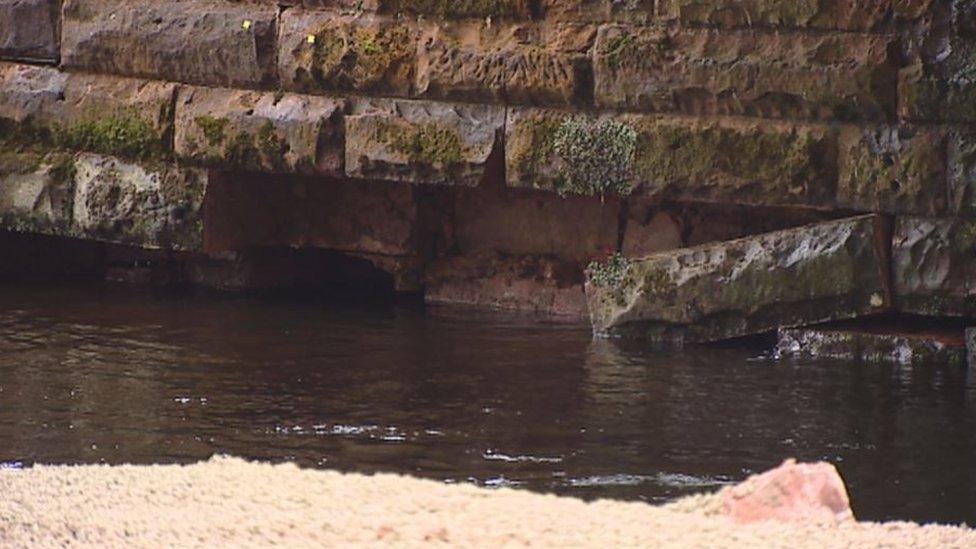
Flood water undermined parts of the pier supporting the viaduct
The Victorian-built Lamington Viaduct was severely damaged by flood waters during Storm Frank on New Year's Eve 2015.
It later emerged that a train had been allowed to cross at high speed despite the viaduct being "on the brink of failure".
An engineering assessment discovered that floodwater had scoured out much of the foundations of the second pier.
The viaduct, which carries the West Coast Main Line over the River Clyde, was closed for major repair work and did not reopen until late February 2016.
The Rail Accident Investigation Branch (RAIB) investigation into the train crossings has now discovered major flaws in the bridge-monitoring and safety assessment programme.
The RAIB report states that a driver reported a defect on the track on the morning of 31 December 2015 and trains were told to cross at low speed while a maintenance team from track operator, Network Rail, was sent to the site.
The team found "no significant track defects" and the speed restriction was lifted, but when the 05:57 Crewe to Glasgow service passed through at about 110mph, they noticed "large track movements" and immediately put a speed restriction in place.
They noticed the bridge's central pier was damaged by scour - removal of the riverbed beneath the bridge foundation - and closed the line.
A stone had fallen out of the pier and there were large cracks above the gap. Divers later found a hole one metre deep under the foundations.
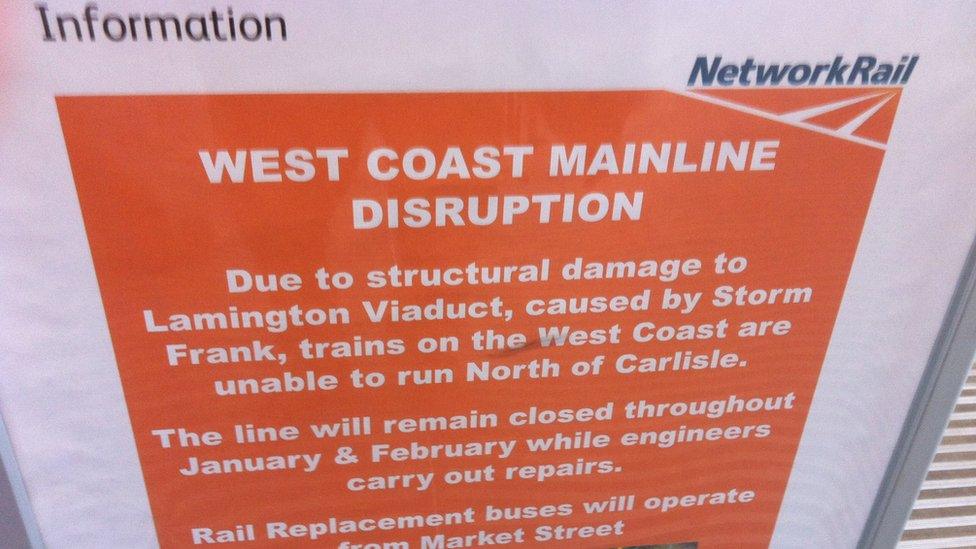
The viaduct was closed for more than a month
Investigators found the bridge was on a list of vulnerable structures which needed special precautions during floods, including monitoring river levels and closing the line if the water reached a certain level.
The RAIB report stated: "However, this process was no longer in use and there was no effective scour risk mitigation for over 100 of the most vulnerable structures across Scotland.
"This had occurred, in part, because organisational changes within Network Rail had led to the loss of knowledge and ownership of some structures issues."
Simon French, Chief Inspector of Rail Accidents, said: "It is of particular concern to me that the vulnerability of this structure to scour had been identified at least 10 years previously.
"Despite this, insufficient action had been taken to protect the piers from scour or to monitor the integrity of the viaduct at times of high water flow.
"The continued operation of trains over this high-risk structure, despite a previous report from a driver of a rough ride, provides vivid evidence that the risk of scour was not generally appreciated by those involved."
Mr French added: "Of even more concern was our finding that there were no effective scour mitigation measures in place for over 100 of the most vulnerable structures across Scotland.
"We discovered that a previous process for managing scour risk on Scotland route had fallen into disuse, at least in part due to organisational change, and that this had not been recognised by Network Rail."
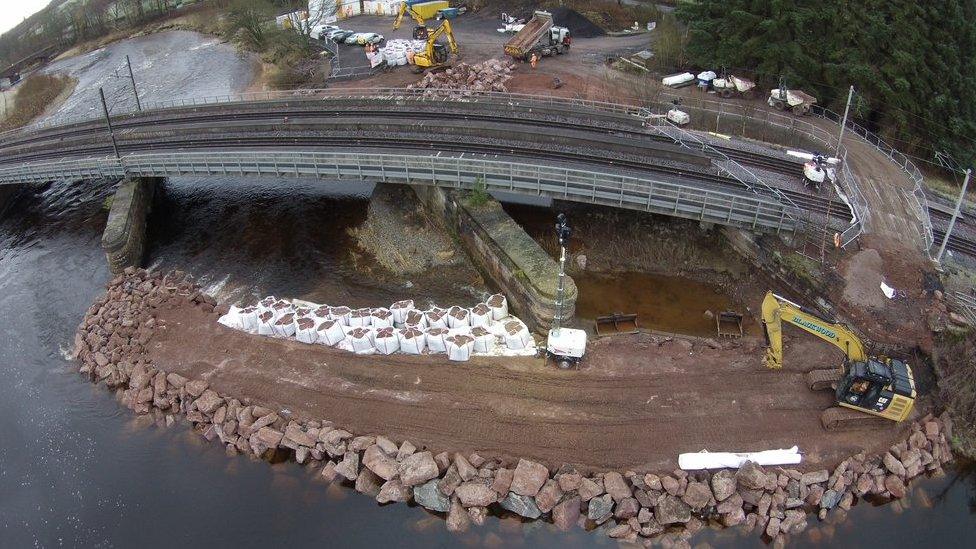
Major repair work was completed by February 2016
The RAIB asked Network Rail to take action on the management of scour risk as well as its response to defect reports affecting structures over water and the management of control-centre procedures.
A Network Rail spokesman said the track operator would "carefully review the findings" of the RAIB report.
"The safety of passengers, and rail workers, is of vital importance to Network Rail and we have already made significant changes to our management and maintenance of scour-risk structures in Scotland since Lamington," he said.
"We have invested over £3m so far this year to reduce scour-risk at high priority structures and have carried out 277 specialist underwater examinations to assess the foundations of bridges ahead of this winter.
"We have also identified 50 bridge sites where we will roll-out telemetry equipment, to help monitor the impact of flooding on the network and to improve early identification of potential issues."
- Published22 February 2016
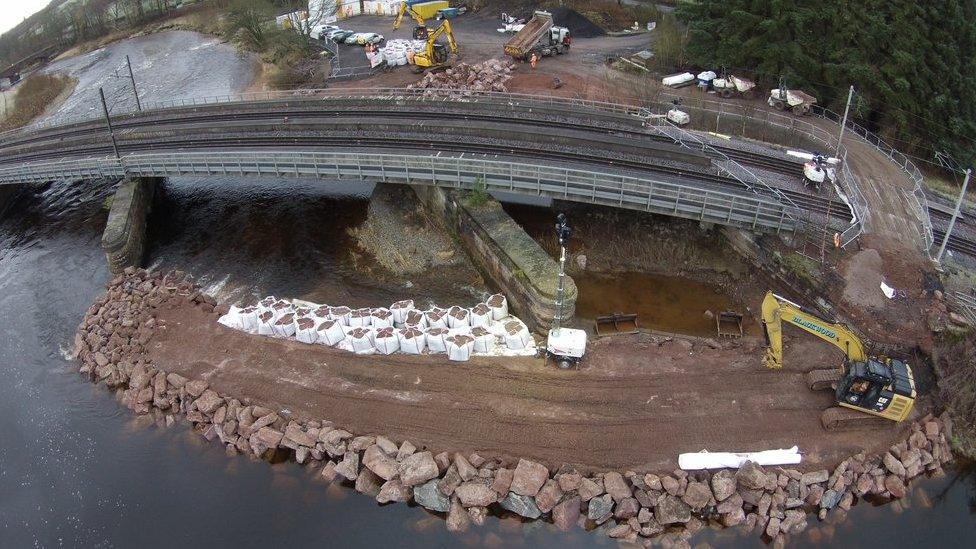
- Published15 February 2016

- Published25 January 2016

- Published18 January 2016

- Published8 January 2016
